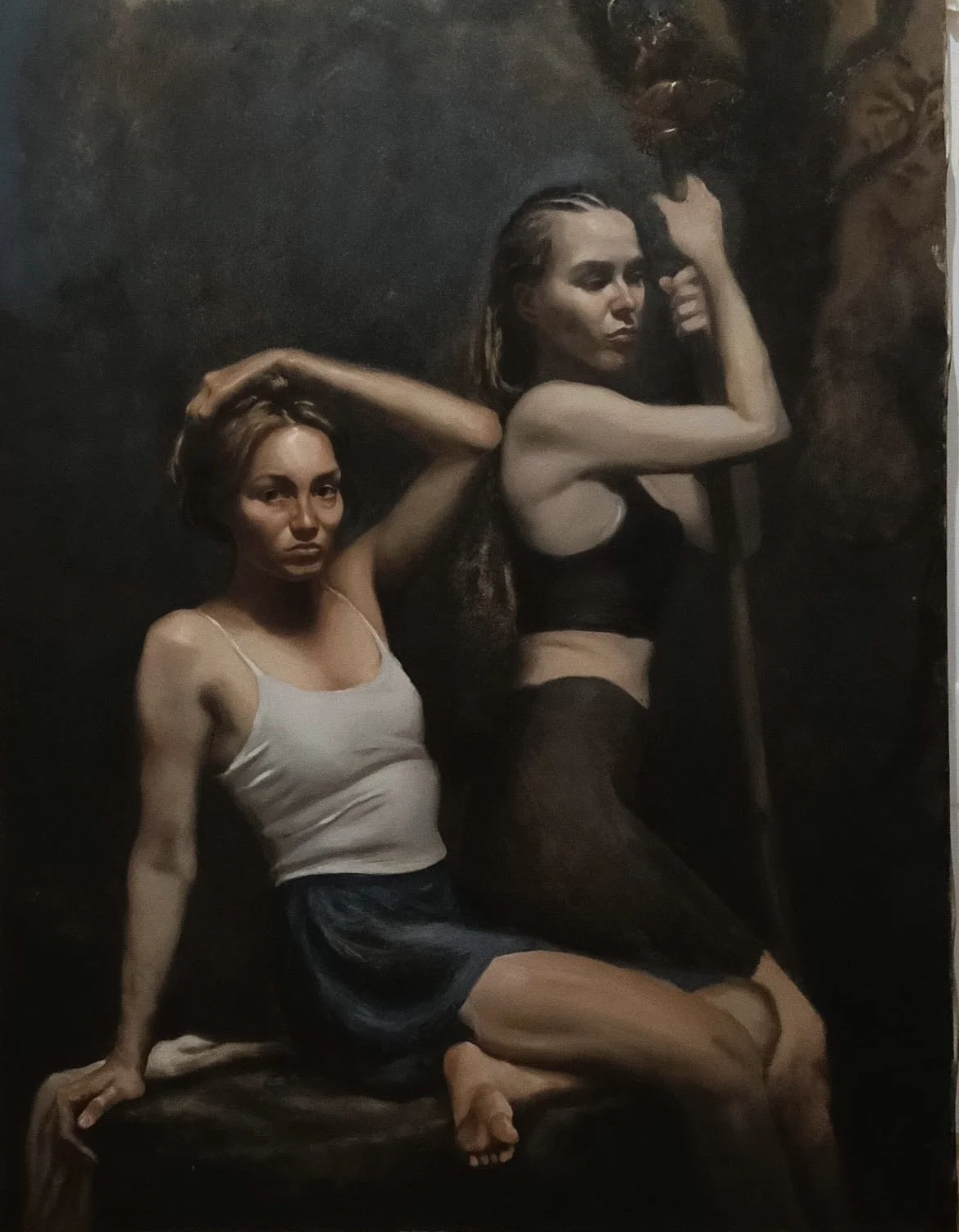 Image 1 of 1
Image 1 of 1


Passatempo Antico
Artist: Borja Pérez Mielgo, Spain
Oil on Canvas, 116 × 68 cm
This painting is part of Il Ciclo Fiorentino, a classically inspired project that draws from the chiaroscuro tradition of the Baroque and the academic language of the 19th century, reimagined through a contemporary lens.
The scene portrays two women, inspired by close friends, reimagined as divine archetypes. Borja leaves it ambiguous as to who is who. It can be interpreted as either Venus Cypria and Juno (Hera) or Venus Satunia, and a dual embodiment of Venus. The latter reflects the Neoplatonic duality so central to Renaissance thought: beauty and love in tension with time, loss, and inner transformation.
Originally conceived as part of a larger composition on the Myth of Marsyas and Apollo - where the two deities offered opposing views on divine punishment (justice vs. compassion) - these figures eventually evolved into their own autonomous narrative. Here, they speak of feminine power and the sublime duality between revelation and mystery; between youthful, romantic, maternal, new love, against the passage of time, disappointment and pain.
The composition is rendered in a tenebrist key, where form slowly emerges from shadow. This balance of the seen and the hidden defines the entire work, reinforced by a restrained palette reminiscent of the Florence Academy’s tradition. The figures surface from darkness not just visually, but symbolically - split yet complementary forces seeking unity through contrast.
For more information about this piece please inquire by clicking here.
Artist: Borja Pérez Mielgo, Spain
Oil on Canvas, 116 × 68 cm
This painting is part of Il Ciclo Fiorentino, a classically inspired project that draws from the chiaroscuro tradition of the Baroque and the academic language of the 19th century, reimagined through a contemporary lens.
The scene portrays two women, inspired by close friends, reimagined as divine archetypes. Borja leaves it ambiguous as to who is who. It can be interpreted as either Venus Cypria and Juno (Hera) or Venus Satunia, and a dual embodiment of Venus. The latter reflects the Neoplatonic duality so central to Renaissance thought: beauty and love in tension with time, loss, and inner transformation.
Originally conceived as part of a larger composition on the Myth of Marsyas and Apollo - where the two deities offered opposing views on divine punishment (justice vs. compassion) - these figures eventually evolved into their own autonomous narrative. Here, they speak of feminine power and the sublime duality between revelation and mystery; between youthful, romantic, maternal, new love, against the passage of time, disappointment and pain.
The composition is rendered in a tenebrist key, where form slowly emerges from shadow. This balance of the seen and the hidden defines the entire work, reinforced by a restrained palette reminiscent of the Florence Academy’s tradition. The figures surface from darkness not just visually, but symbolically - split yet complementary forces seeking unity through contrast.
For more information about this piece please inquire by clicking here.